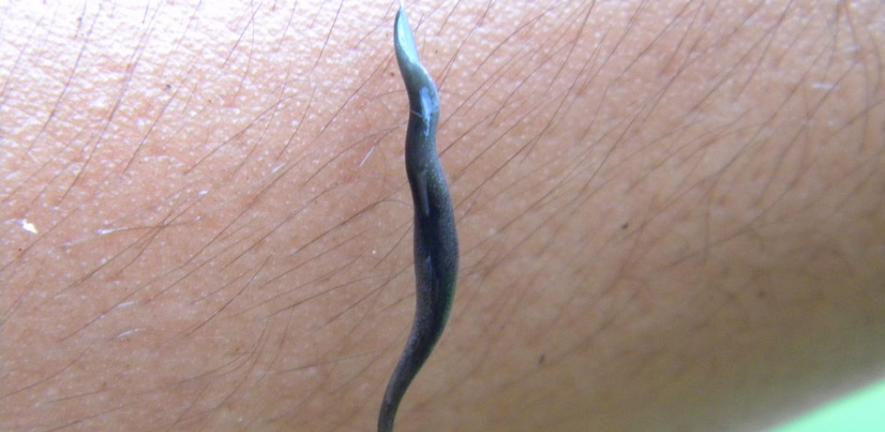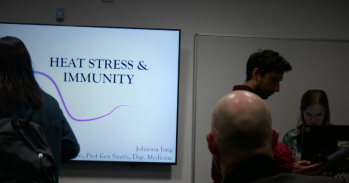
The common view has been that parasitic infections cause disease and must be eliminated. But can we live without them?
The common view has been that parasitic infections cause disease and must be eliminated. But can we live without them?
As more knowledge of the host–parasite relationship is gained, it is becoming increasingly clear that parasitic infections are not necessarily pests that need to be eradicated.
The human race used to have a consensus attitude towards the organisms that we call parasites. They were simply pests, causative agents of disease that warranted nothing else other than extermination. As soon as new life-cycles were described in the literature, the race began to find a way of interrupting transmission and end the misery. The literature is therefore full of examples of control programmes for just about every parasite that has ever been identified. Some, such as the programme against the guinea worm, Dracunculus medinensis, have been so successful that complete eradication is now on the World Health Organization’s agenda.
As we wave goodbye to the guinea worm, it will be time to re-visit the hit-list, and to see how far we’ve progressed. In doing so, we are likely to observe that not much has changed. In fact, the guinea worm is the only parasitic infection that has ever been described and then systematically eradicated. There are even signs that the parasitic fauna of the planet is flourishing – recent estimates put the toll of malaria at between 300 and 660 million cases a year, and there are still hundreds of millions of people infected by each of several parasitic worm species. This group includes the trematode parasite Schistosoma mansoni – a blood fluke that infects approximately 200 million people in the tropics and sub-tropics, and which has been the focus of research efforts at the University of Cambridge Department of Pathology for the past 30 years.
Fighting the fluke
Theodor Bilharz formally described schistosome parasites in 1851, at which point the centimetre-long, red-blood-cell-eating worm joined the most-wanted list. Like every other parasitic infection, S. mansoni was viewed with fear and loathing – and with good reason. Infection occurs through contact with free-living larvae in freshwater, with rapid penetration of intact human skin. The adults live in the mesenteric veins between the liver and gut. Females produce eggs that become trapped in the liver, promoting an inflammatory response that eventually leads to a form of hepatic fibrosis and portal hypertension. About half the eggs pass through the gut wall, each puncture causing a small amount of blood to be lost. As the worm burden increases with repeated exposure, so the number of eggs in both the liver and gut increases, leading to ever more severe disease.
Early attempts at large-scale control of schistosome infections relied on crude drugs and environmental modification, with success in some areas, but in most places the parasite persisted. Although treatment (praziquantel) is available, re-infection occurs rapidly, especially in children. The lack of effective, non-toxic medicine, and the success of vaccination programmes against bacterial diseases, led to the emergence of renewed research efforts aimed at understanding the biology of the worm and its relationship with the human host.
But, despite promises of an anti-schistosome vaccine ‘within five years’ for the past 20 years or so, there is still no vaccine available, because we don’t yet understand the biology of the schistosome worm. Like a fractal puzzle, as we peer more closely we see even greater complexity.
Keeping things quiet
Such is the intimate relationship between host and parasite that we can use the study of schistosome parasites to understand how humans work. One of the key questions that has kept scientists busy is how schistosomes manage to evade the immune response for extended periods. It has been estimated that adult worms live for up to 10 years in their human host. To make this possible, the worms have evolved several mechanisms for diverting, blocking and repressing the immune response. The adult worms coat themselves in host proteins to appear invisible to the immune system. They induce the host to produce ineffective immune responses and they manipulate host cells to produce molecules that signal a general downregulation of the host’s response. This essentially produces a drowsy immune response with impaired vision against a camouflaged target – perfect conditions for the parasite to thrive and reproduce
Recent studies in Cambridge in the laboratory of Professor David Dunne have demonstrated the magnitude of this repressive effect by treating people who are already infected with the parasite and measuring their immune responses before and after taking praziquantel. Responses that are thought to be effective against the parasite often increase several fold after drug treatment, and this ‘boosting’ of the host’s ability to respond appears to help prevent re-infection in the future. Recently, the scientists also reported that the ability to respond after treatment is genetically restricted – an observation that has important implications for the development of any therapy or vaccine that relies on increasing the magnitude of the immune response for its protective effect.
Medical benefits
Although a vaccine is not yet in sight, recent discoveries have raised an interesting conundrum: rather than simply being agents of disease, it appears that parasitic infections, including schistosome worms, may bring medical benefits. Scientists in Cambridge are leading the field in efforts to find out just what is going on.
As more knowledge of the host–parasite relationship is gained, it is becoming increasingly clear that parasitic infections are not necessarily pests that need to be eradicated. Nobody used to have any sympathy for leeches or maggots, but both creatures are now used in medical settings: leeches to clear blood from congested tissues after surgery, and maggots to liquefy dead tissue and kill harmful bacteria in infected wounds. The same thing is now happening to parasites, as it emerges that their influence on the immune system can benefit both host and parasite.
In the Department of Pathology, a clear example of this win–win scenario was demonstrated when researchers in Professor Anne Cooke’s group prevented type 1 diabetes from developing in mice by injecting them with antigens of schistosome parasites. This is likely to be due to the same skewing and downregulation of the host immune response described above.
It seems that by diverting and subverting the immune response, schistosome parasites may prevent the immune system from over-reacting to other proteins. One hypothesis gaining popularity is that, when parasites are removed, the immune response finds new targets, either in harmless allergens (leading to allergy), or in the host itself (leading to autoimmune diseases such as type 1 diabetes).
With such tantalising evidence, it may be time to look at the parasite hit-list with fresh eyes, and ask: can we exploit the intimate relationship parasites have with humans at the same time as reducing their tremendous burden on affected populations?
The Matangini Project
The Matangini Project was created by Dr Mark Booth, in the Schistosomiasis Research Group at the Department of Pathology, to raise funds for community projects in Kenya and Uganda. The aim in 2007 is to raise £5000 to bring safe water to thousands of school children in areas of Kenya affected alternately by drought and water-borne infections such as schistosomiasis.
Cambridge Infectious Disease Initiative
The University of Cambridge is currently developing a major Infectious Disease Initiative, with the aim of increasing the University’s contribution to reducing the global impact of infectious diseases. By building new partnerships based on core strengths, the vision is to establish the University as a leading international centre for infectious disease teaching and research.
For further information, please contact the Co-ordinator Dr Gill Rands (gfr21@cam.ac.uk).
For more information, please contact the author Dr Mark Booth (mb350@cam.ac.uk) at the Department of Pathology (www.path.cam.ac.uk/~schisto).
This work is licensed under a Creative Commons Licence. If you use this content on your site please link back to this page.





